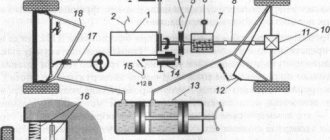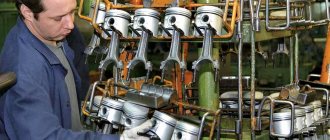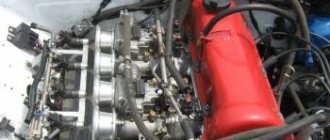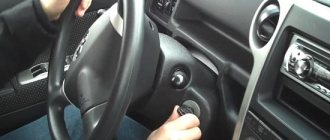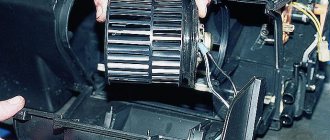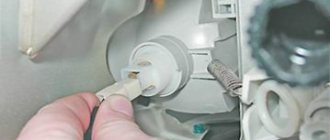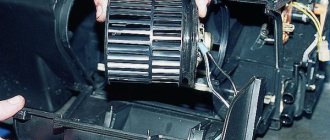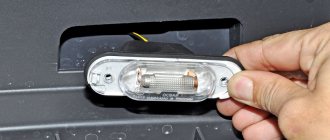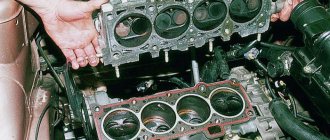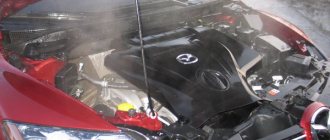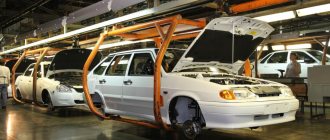Published: 01/28/2021
- DEFECTIVE ENGINE
- What spare parts are needed
- How a document is compiled
- What is included in an engine overhaul?
- Defective car
- How to troubleshoot a power unit
- Engine malfunction
- Troubleshooting is: concept, methods of carrying out
- In what cases is the power unit repaired?
- Kitchen lamps suspended above the table: beautiful visual zoning
- Topaz is a systemic fungicide
- Defects of connections and parts
- Requirements for drawing up
DEFECTIVE ENGINE
After disassembly, thoroughly clean, rinse and dry all parts.
1. Clean the piston head from carbon deposits. If the piston has burrs, burn marks, deep scratches, or cracks, replace the piston.
Clean the grooves for the piston rings. It is convenient to do this with a piece of an old ring.
2. Clean the oil drain holes with a suitable piece of wire.
3. Check the clearances between the rings and grooves on the piston.
Nominal clearance, mm:
upper compression ring A. . . . . . .0.04–0.075
lower compression ring B. . . . . . . .0.03–0.065
oil scraper ring B. . . . .0.02–0.055
The maximum permissible gap for all rings is 0.15 mm.
4. The clearances can be most accurately determined by measuring the rings and grooves on the piston. To do this, measure the thickness of the rings with a micrometer in several places around the circumference.
5. . then, using a set of feeler gauges, measure the width of the grooves in several places around the circumference. Calculate the average clearance values (the difference between the ring thickness and the groove width). If at least one of the gaps exceeds the maximum permissible, replace the piston with rings.
6. Measure the gaps in the ring locks by inserting the ring into a special mandrel. If there is no mandrel, insert the ring into the cylinder (in which it worked), using the piston as a mandrel, push the ring into the cylinder so that it is installed evenly in it, without distortions.
7. . and use a feeler gauge to measure the gap in the ring lock. The nominal gap should be 0.25–0.45 mm, the maximum permissible (as a result of wear) is 1.0 mm. If the gap exceeds the maximum permissible, replace the ring.
8. If the gap is less than 0.25 mm, carefully file off the ends of the ring with a file.
9. Check the clearances between the pistons and cylinders. The clearance is defined as the difference between the measured diameters of the piston and cylinder. The nominal gap is 0.025–0.045 mm, the maximum permissible is 0.15 mm. If the gap does not exceed 0.15 mm, you can select pistons from subsequent classes so that the gap is as close as possible to the nominal one. If the gap exceeds 0.15 mm, bore the cylinders to the next repair size and install pistons of the corresponding repair size. Measure the diameter of the piston at a distance of 55 mm from its bottom in a plane perpendicular to the piston pin.
Rice. 4.15.
Cylinder measuring locations
10. Then measure the diameters of the cylinder in two perpendicular planes
(Fig. 4.15) (along B and across A of the cylinder block) and in four belts (1, 2, 3 and 4). For this you need a special device - a bore gauge.
11. When replacing parts of the connecting rod - piston group, it is necessary to select pistons to cylinders by class and one group by weight, as well as piston pins to pistons by class and connecting rods by weight. To select pistons for cylinders, calculate the gap between them.
12. For the convenience of selecting pistons for cylinders, pistons and cylinders, depending on their diameters, are divided into five classes: A, B, C, D, E (Table 4.1).
Spare parts include pistons of nominal sizes of three classes A, C, E and two repair sizes. The first repair is increased by 0.4 mm, the second - by 0.8 mm.
Based on weight, the pistons are divided into three groups: normal, increased by 5 g and decreased by 5 g. Pistons of the same group must be installed on the engine.
For repair size pistons, spare parts include repair size rings increased by 0.4 mm and 0.8 mm.
The number “40” is stamped on the rings of the first repair size, and “80” on the second.
Cylinder surface development
Causes:
- Ignition system malfunction.
- Failure of the power supply system.
Diagnostics, repair and adjustment of the power supply and ignition systems are carried out. Severe wear on the surface of the blocks is repaired with a sleeve or boring.
The absence of a hone grid on the surface of the cylinders is one of the indirect signs of wear. During troubleshooting, specialists check the taper, bore and ellipse of the cylinders as follows: each cylinder is checked with an indicator bore gauge at three points in two mutually perpendicular planes. The stop zone of the upper compression ring usually shows the heaviest wear. The methods of boring and honing followed by lining are used when working out in cylinders more than 0.1 mm.
View gallery
What spare parts are needed
Consider the list of spare parts for major repairs of the power unit:
Piston group kit, it includes pistons, piston rings, piston pin. If the block is sleeved or such a need arises, then sleeves are purchased accordingly. When purchasing a piston group, there is no need to rush; you must first take the block to where you are going to sharpen it, and only after measuring the master will tell you what type of repair the piston needs to be purchased. It's a matter of desire; if you want, you can purchase pistons with recesses, especially useful if you are experimenting with split gears, etc. And the chain, despite its reliability, can break once every 20 years and then the meeting of the pistons with the valves is inevitable. Main and connecting rod bearings are purchased after the crankshaft has been ground. After grinding the crankshaft, the master will tell you which bearings you need to buy - 0.25, 0.50, 0.75, 1. This depends on the degree of wear of the crankshaft. It is better to take original earbuds. Oil pump. This matter is quite controversial, but I prefer to change it when conducting capital
Many people say that it can last for a very long time - I don’t take into account such stories, do it like that. Camshaft I also recommend replacing it, but if finances are really bad, then you can postpone replacing it, but this is very undesirable
Although if the camshaft is in good condition, you can leave it. The intermediate shaft (drive shaft of auxiliary units, pig) is the shaft that rotates the distributor and the oil pump and is driven by a motor chain. This shaft greatly affects the pressure in the lubrication system - if the bushings are heavily worn, the oil pressure drops significantly. When overhauling an engine, the bushings must be replaced, processed with reamers, and the shaft is also either ground or replaced with a new one. There is also an intermediate shaft on ball bearings; this, in addition to increasing the service life of the industrial shaft, also allows you to increase the pressure in the lubrication system. From all this, it is necessary to take away that at the time of sending the block for grooving, you need to purchase a new one or take with you an old washer so that you can replace the bushings and grind the shaft (if you leave the old one), at least this is the case with us. If the cylinder head is also being repaired, then it is necessary to purchase valves, valve seals, and springs (if the old ones do not hold the force). I also recommend replacing the entire motor chain tensioning system, as well as the motor chain itself, this includes: crankshaft, camshaft, shaft sprockets, motor chain, motor chain tensioner shoe, motor chain tensioner, motor chain damper. Beware of fakes, there have been cases when the motor chain tensioner shoe was made of non-oil resistant rubber and it collapsed quite quickly. I try to install a plastic damper, since even if it breaks, it may not harm the engine as much as a rubber-metal one. The crankshaft seals, rear and front, must be replaced. You also need to purchase a set of gaskets, you can buy all paper gaskets separately, and buy them separately for the pan, valve cover and under the cylinder head. Also check the bearing, which includes the gearbox input shaft, at the end of the crankshaft. If there is play in the bearing, it must be replaced. If the engine knocks or the connecting rod bearing turns, then the connecting rod must be replaced. Also, do not forget about all the consumables - oil, filter, coolant.
Types of sensors
There are two types of knock sensors:
- Broadband.
- Resonant.
The most common are broadband knock sensors, the design and principle of operation of which were described above. As a rule, they have a round shape with a hole in the middle for attachment to the block.
Resonant ones are similar to oil pressure sensors with mounting in the form of a threaded fitting. They are tuned not to the level of vibration, but to the frequency of micro-explosions in the combustion chamber. If they are detected, an electrical signal is transmitted to the controller. Each engine has its own micro-explosion frequency, which largely depends on the diameter of the pistons.
How a document is compiled
When drawing up an act, you must adhere to the following rules:
- Compose even with minor defects.
- Enter all names (company, owner's name, car name, names and part numbers) without abbreviations.
- Documents confirming the purchase or installation of parts must be attached to the act.
- The defect inspection report is drawn up immediately before repair (write-off) or immediately after it.
- The act is drawn up by hand, corrections are not allowed.
- The act is signed by the head of the organization responsible for its correct execution, and approved by the owner of the car or his authorized representative.
Form
A typical form of defect detection used when inspecting a vehicle should include:
- The name of the document with its number.
- The name of the organization and, if necessary, its structural unit performing this work.
- The date of the inspection and the number of the order for the company on its implementation.
- Full name of the car and its technical data.
- List of members of the commission by name, indicating their positions or relationship to the commission.
After the introductory part of the document there follows a summary of the defect detection in the form of a plate, including:
- Serial number.
- Name of the part or assembly.
- Quantity.
- The type of malfunction or defect.
- Description of measures to eliminate the detected breakdown, including types of repair work.
Then follow the conclusions of the commission, formalized as a decision with the signatures of all its members.
The defect report is approved by the head of the company and, if necessary, agreed with the owner of the car.
Provisions and examples
But in some cases, when a car is defective, the final act includes special provisions, which will be outlined below using specific examples.
The form can be downloaded here.
Sample car defect report
Engine malfunction
This is a labor-intensive process requiring:
- Preliminary visual inspection.
- Then dismantling with measurements and assessment of the performance of all parts.
- Drawing up a defect report for the engine.
This act must include:
- Document number, date and time of inspection.
- Details of the company conducting the examination and the customer.
- Inspection location.
- Information about the model, year of manufacture and vehicle number.
- Engine number and type.
- The amount of mileage.
- Description of operational defects recorded prior to inspection.
- List of identified faulty or broken parts.
- Expert conclusion on each of them (repair or replacement).
- Signatures of all inspection participants.
The video below will tell you about troubleshooting and maintenance:
Defective parts
A defective car part may have:
- External damage that can be detected visually at the time of purchase.
- An internal fault that can only be detected during installation or during operation.
In both cases, a complaint is filed, accompanied by a defect report, which looks like this:
- The name of the act with the number and indication of the place of inspection.
- Names of defective parts.
- Description of the defect.
- Indication at the time of detection of the malfunction (in the warehouse, before installation, after installation).
- Conclusion about the need for replacement.
- List of parts required for replacement with quantities.
- Commission signatures.
The act is approved by the head of the organization from which this commission was selected.
After an accident
Troubleshooting after an accident is carried out for:
- Find out the cost of repairs.
- Determination of the amount of compensation.
It is carried out:
- Independent expert companies and includes, in addition to the act, a complete set of documents confirming it. But this service is paid.
- When the car comes in for repair, it is free of charge, but in this case an agreement with all interested parties is required.
The document itself must contain the following information:
- Full details of the organization conducting the examination.
- Name and number of the report, date, time and place of inspection.
- Place and date of the accident.
- Certificate number from the traffic police.
- Name, number, make and color of the car.
- Numbers of main units.
- Certificate of registration and full details of the owner.
- This is followed by a list of damaged parts indicating the location, nature, type and extent of the fault.
- There should also be recommendations on the possibility of restoration or replacement.
- Confirmation of defect detection results by commission members and interested parties, including car owners and road accident participants.
Defective statement for premises repairs
When there is a need to compile it
A defective statement for the repair of premises is drawn up to justify the costs of repair work. In it, the specialist identifies and lists the defects that need to be eliminated, takes into account the consumables and scope of work required for this, and can also provide recommendations and other additional information.
Why do you need a defective statement for premises repairs?
The main function of this document is justification. Based on the data included in the “defect”, material costs and their feasibility from the point of view of the tax inspectorate are “justified”.
Who has the right to draw up
The defect report for the repair of premises is drawn up by a special commission created on the initiative of management, which includes:
- accountant;
- equipment specialist;
- repair specialist.
The result should be a complete objective picture of the upcoming work front.
What is shown on the statement
All data entered into the statement can be divided into three groups:
- information about the premises itself (name, location, etc.);
- a list of detected defects and the reasons that caused the malfunction;
- list of necessary types of repair work.
Important nuances
When filling out a defective statement for the repair of premises, it is necessary to take into account some important features
- When listing repair work, they must be formulated in accordance with the accepted nomenclature (according to the TER and FER reference books).
- When describing defects, it is necessary to clearly describe the violations, their volumes and deadlines for elimination.
- For each stage of work, you need to appoint responsible persons who must sign.
- Fully indicate brands, models and other characteristics of materials and equipment required to perform the work.
APPROVED General Director of Express-Infra LLC /Z.I. Trudin/ Trudin Z.I. 06/11/2017
Defect sheet No. 11/13 for repairs of premises (building)
Name of object: facade of LLC "Lacrimosa"
Object address: Pushkino, Pervomaiskaya st., 8
| No. | Defects and damage found | Necessary work to eliminate | Volume of defects identified | Time frame for elimination |
| 1 | Cracks in concrete cornice slabs | Restoration of the protective concrete layer of cornice slabs | 2 cubic meters | July 2022 |
| 2. | Damage to foundation flashings and wall gutters | Replacement of damaged elements with galvanized metal | 250 linear meters | August 2022 |
| 3. | Crack in plaster on external slopes | Application of cement-lime mortar. Coating with acrylic paint | 30 sq.m | August 2022 |
Head of the administrative and economic department /Ramzin/ L.S.Ramzin Chief engineer /Zagrebelny/ Yu.D.Zagrebelny Technician /Lavrinov/ N.N.Lavrinov
What is included in an engine overhaul?
Overhaul of diesel and gasoline engines is done in stages:
- Disassembling the internal combustion engine.
- Parts washing and cleaning.
- After cleaning, an experienced auto mechanic is able to determine how badly certain parts are worn and whether they can be repaired or better replaced. They do troubleshooting, that is, after the cylinder head (cylinder head) has been removed, it and the cylinder block (cylinder head) are checked for chips and cracks; examine the cylinders for scuffs and scratches; determine the gaps of mating parts; inspect the condition of the pistons for the presence of chips, shells, carbon deposits; inspect the crankshaft connecting rods; study of the internal combustion engine crankshaft; fingers; bearings; parts of the gas distribution mechanism are also checked (valves, rocker arms, etc.). They also compare the dimensions of important parts with the factory ones.
- After troubleshooting, it is necessary to assess the degree of wear of the entire engine: what to change, what to leave, what to repair.
Defective car
An accident that has occurred, as an assessment of the damage and damage caused, requires the following sequence of actions when applying for insurance:
- Call a traffic police officer, who issues a certificate and indicates visible damage to the car.
- Contact the insurance company with a corresponding application.
- Contact an automotive expert. The specialist will conduct an accurate assessment of the damage using modern electronic systems and document them in the inspection report, indicating the calculation of the necessary costs and the method of eliminating external and hidden internal defects: welding, straightening, replacement of spare parts, painting.
- The car owner must request from the car service technician an Inspection Certificate for the vehicle (vehicle) indicating the required elimination of defects, the price list, and order the defect detection process itself.
It is very important to have an official document on hand regarding the injuries sustained during the accident. In case of disputes with the insurance company, this document may be required in court.
We draw up a defect report correctly
In terms of its content, the presented document is not universal and is unacceptable for a number of defect recording situations. For example, this form is not suitable for reflecting defects in real estate. In such cases, organizations have the right to draw up and approve their own form of a defect report indicating the required information (clauses 2, 4, article 9 of the Law “On Accounting” dated December 6, 2011 No. 402-FZ).
A defective act for writing off OS (equipment) is generated and confirmed by a commission approved by order of the organization. The commission must include: the chairman of the commission appointed by order, the chief accountant, the employee responsible for the safety of the OS (equipment), and a specialist who understands the technical characteristics of the OS (equipment) being inspected. In the absence of the latter on the organization’s staff, third-party companies that carry out a technical assessment of the operating system (equipment) are invited to draw up a defect report.
How to troubleshoot a power unit
Having figured out why it is necessary to defect an engine, let's now look at the procedure itself. As a rule, engine troubleshooting can be divided into several main stages.
- At the very beginning, troubleshooting of various parts begins to be carried out in parallel with the process of disassembling the power unit. An internal combustion engine repair specialist visually assesses the condition of each part that is removed from the engine, after which, based on such a preliminary assessment, certain conclusions can be drawn.
- Then the master puts aside parts that are severely damaged or cannot be repaired. Afterwards, these parts need to be replaced with new ones according to the list. Another group is formed nearby, which includes parts that are still suitable for restoration or have no noticeable damage.
- The parts that are collected in the second group are elements for the second stage of troubleshooting. Next, their sizes and parameters are carefully measured, after which the data obtained is compared with the nominal value. Experienced craftsmen specially keep a so-called defect sheet, which contains a list of restored parts and those elements that have not been changed at all as part of the current repair. Such a list, when the next repair becomes necessary, makes the task easier for subsequent troubleshooting of parts.
Defective engine block
As you know, the cylinder block is actually the main part of the entire engine. Moreover, the BC is a numbered part, since the engine number is printed on the block. In other words, the block must be defective especially carefully, since its complete replacement involves certain legal complications in the future.
- Engine troubleshooting involves inspecting the cylinder block. At the very beginning, a visual check of the block is carried out to identify scoring, cracks on the cylinder surface, between the threaded holes in the cylinder head mounting points.
- If it has been noted that engine oil has gotten into antifreeze or antifreeze into the oil, then additional pressure testing of the block is performed to identify cracks in the oil channels or cooling channels;
- Then the temperature and oil plugs are checked for their integrity; the check also affects the crankshaft bed, main caps (yokes), etc.
- The next step is to measure the cylinders using special tools (bore gauge, etc.). Thanks to such measurements, the output is assessed, which makes it possible to determine whether the cylinder is suitable for further operation.
- Lined blocks that have replaceable liners are subject to inspection in the area of the liner seating belt; at the same time, the condition of the stud fastenings for installing the cylinder head is assessed, etc.
If the block has such damage, then a decision is made on the possibility and feasibility of repairing certain defects, boring the cylinders, lining the block, etc. The block to be repaired is then washed, the oil cavities are opened, and then washed.
Next, the BC is ground to repair dimensions or sleeved to restore the required parameters (depending on the type of block, the material of its manufacture, the degree of damage, etc.)
At the same time, it is very important to carry out all operations correctly, as well as to observe the peculiarities of the technical process.
For example, experts pay special attention to the hone in the cylinders. Honing allows you to achieve proper operation of the piston rings, get rid of increased oil consumption, etc.
Hammer soldering iron
Hammer soldering iron
- Before starting work, the repair area, which has through corrosion, should be cleaned of rust residues;
- Because solder will not stick to a rusty surface;
- The most important thing is not to be lazy, when you are too lazy to tinker, then go back to the beginning, where it is recommended to purchase a new part;
- To remove the remaining rye you will need a pointed needle file, or a piece of hacksaw blade, or a knife with a sharp blade and abrasive sandpaper;
- Use coarse sandpaper (grain P60-80) to pass through the rust spot (if not brushed), this removes the surface layer;
- Then you should pick out any rust that has already set in from the metal;
- To make the places clearly visible, you need to apply a rust converter with a brush and wait a couple of minutes;
- The rust will darken and become clearly visible on clean metal; at this stage you will need pointed objects to pick out rotten metal;
- The process is the most tedious and time-consuming;
- You should constantly apply rust converter to these areas with a brush;
- This way you wash away the rust you've already picked off and see where you need to put in extra effort;
- After the place has been cleaned, you can begin servicing it;
- Apply soldering acid to the surface before it dries, you need to apply tin solder with a heated soldering iron over the entire cleaned surface, where there are already and may appear holes from corrosion
- For better tin solder adhesion, constantly lubricate the evaporating acid
- When the metal of the case is thick and the power of the hammer soldering iron is not enough to heat the tin, then use an industrial hair dryer or a second soldering iron
Repairing corrosion damage to the body cannot be done carelessly; the price of careless work is that the body will rust again and very quickly; After completing the work, check again with a light to see if there are still any through holes; After the repair area has been tinned and the corrosion areas have been soldered, the treated surfaces should be cleaned of any acid and converter that may remain; As a rule, they are washed with water or a mixture of gasoline and alcohol; In order to increase the service life of a repaired body part, it is important to properly protect it from contact with the atmosphere; Apply acid primer to the tinned area of this body part using a paint sprayer, then acrylic primer on top of it, only after that can the surface be puttied;
- If suddenly, when sanding the putty, you get rubbed down to the metal, there’s nothing to worry about, just blow it with acid primer again and cover the exposed areas with acrylic;
- When completing the restoration of a rusty car body, you should definitely protect the back side of that repair area;
- The condition is mandatory! Otherwise, all the work done will go down the drain;
- There are many ways to protect against corrosion, the main thing is to block the access of moisture and air to the protected area;
- The first option is to prime the back side with acid and acrylic primers;
- The second option is to apply a layer of good sealant, mastic, or fill it with Movil;
- The choice of option will depend on the ease of access to the surface being treated;
- If you can’t get to it with a sprayer, try applying the primer with a brush, and then cover it with Movil, to be safe, or a similar product;
- Now it is clear to you how to restore a car body from rust with small holes;
Engine malfunction
Engine troubleshooting is an inspection and measurement of the characteristics of parts that need to be repaired or replaced. It allows you to identify specific spare parts that have been destroyed, as well as the reasons why this destruction occurred.
It’s one thing when all engine parts wear out evenly (in the case of natural wear). Another is when there are clearly “criminal traces”. In this case, you need to accurately determine the cause of what happened. Since the usual replacement of worn parts with new ones, without identifying the cause of the malfunction, can lead to the need to repair the engine again.
Troubleshooting is: concept, methods of carrying out
Any concept has its own definition. Troubleshooting is a procedure for expert assessment and identification of the cause that caused the breakdown of an engine or any other mechanism. The procedure itself consists of identifying and eliminating all types of defects, with an assessment of their cost, drawn up in a special act. Most often, troubleshooting is carried out for cars that have been in an accident.
Features of the troubleshooting procedure. What is this?
Defect detection is an evaluative diagnostic procedure that reveals hidden damage. It is carried out by a specialist through inspection and use of technical and electronic means.
Troubleshooting identifies any internal damage, the need to replace functional parts, and checks the operation of mechanical systems. Based on the verification, a list of services, the use of parts is created and the full cost of work and spare parts is calculated.
The cost of troubleshooting depends on the need to disassemble the vehicle; for visual inspection and disassembly, it ranges from 300 to 1,500 rubles.
Information from the defect report can be used for:
- assignment of insurance payments;
- confirmation of repair costs;
- documentary support for the use of warranty or service.
The troubleshooting procedure takes no more than one day, is carried out in the presence of the customer, with the issuance of a report on the day of application, and the receipt of oral and written recommendations.
IMPORTANT! Some car repair shops offer troubleshooting services for free, provided that the car is repaired by them
Defect sheet
The procedure for registering identified malfunctions (defects) in the operation of a unit or mechanism is documented in a document indicating the calculation of the scope of work (estimate). The statement is compiled by a specialist who indicates in it:
- all types of necessary work (installed and completed);
- number of actions (volume);
- the materials used and their real cost (domestic and imported raw materials are listed, exclusive ones must be indicated);
The specified work in the statement must be completed correctly:
- Detail the list.
- Specify the type of work (what kind of repair was carried out).
A correctly drawn up estimate before a meeting with the customer saves time for both parties to the contract when specifying services to eliminate the defect.
At the same time, the calculation of work and the cost of materials and spare parts used is an important component
IMPORTANT! A correctly drawn up document to indicate defects allows you to reduce production costs, shorten the time for providing services, correctly distribute the process and significantly reduce the cost of funds
Defective car
An accident that has occurred, as an assessment of the damage and damage caused, requires the following sequence of actions when applying for insurance:
- Call a traffic police officer, who issues a certificate and indicates visible damage to the car.
- Contact the insurance company with a corresponding application.
- Contact an automotive expert. The specialist will conduct an accurate assessment of the damage using modern electronic systems and document them in the inspection report, indicating the calculation of the necessary costs and the method of eliminating external and hidden internal defects: welding, straightening, replacement of spare parts, painting.
- The car owner must request from the car service technician an Inspection Certificate for the vehicle (vehicle) indicating the required elimination of defects, the price list, and order the defect detection process itself.
It is very important to have an official document on hand regarding the injuries sustained during the accident. In case of disputes with the insurance company, this document may be required in court.
Conclusion
There is no need to delay the troubleshooting, since the sooner the car owner contacts the car service center, the faster the insurance company will pay for hidden damage.
https://youtube.com/watch?v=lys82hiFeF4
No comments yet
“Peter - AT” INN 780703320484 OGRNIP 313784720500453
Why do
Body repair work is carried out when the following phenomena are observed:
- damage to the paintwork (scratches, chips);
- the appearance of corrosion on the body;
- formation of dents and their pulling out as a result of an accident or other damage.
First, the car needs to be examined to assess the extent of the damage.
If repairs are not carried out in time, even a minor chip can lead to serious problems in the future. Gradually, the chip will expand, become covered with corrosion, and soon the source will spread over a large area of the car. Such processes are difficult to carry out independently and will require financial investments.
Therefore, it is important to immediately carry out the necessary procedures to repair the car when small defects appear.
Do-it-yourself body repair is divided into:
- Local – elimination of small chips, dents, scratches and areas of corrosion.
- Complete – restoration of geometry and severe damage to the body.
Do-it-yourself local car body repairs are easy to do. Serious preparation will require a complete recreation of the appearance of the vehicle. To restore the geometry of the machine, special instruments and devices will be required.
In what cases is the power unit repaired?
Let's consider in what cases it will be necessary to repair the engine:
- Wear and wear of parts exceeds 80% of the resource.
- The appearance of mechanical damage to the main components of the power unit.
- Failure due to improper setup or maintenance.
- Other reasons that could cause malfunctions.
How to classify the repair of gasoline engines:
- On-line repair. This is the repair of worn parts, which during operation have a service life lower than the main power unit.
- Technical repair of engines. It is carried out during routine maintenance for the planned replacement of worn out elements.
- Unscheduled repairs of car engines. This is an unexpected breakdown of the power unit, which is caused by poor-quality maintenance, spare parts or other reasons that led to restoration operations on the motor.
- Planned repairs. It is also called a major overhaul. It is usually carried out according to the mileage of the car, when the resource of the power unit is exhausted.
Examination after an accident
If a car owned by a company gets into an accident, then it is necessary to correctly determine the amount of expenses that are necessary for repairs. For this purpose, an expert assessment is carried out by invited specialists. The purpose of drawing up a defect report is to solve two problems:
- determining the exact amount that will be required for repairs;
- identifying the amount of compensation.
The assessment is carried out only by independent experts. In addition to the standard defect inspection report, other documents are generated confirming certain malfunctions and damages. This service is provided only on a paid basis, but if the car is sent to a service center for repairs, the service is included in the cost of the repair.
The inspection report after an accident includes the following information:
- details of the company conducting the assessment;
- date and place of inspection;
- information about the accident that occurred;
- details of a certificate from the traffic police;
- detailed description of the car and number of units;
- STS and PTS details;
- list of damages identified during the accident;
- recommendations regarding replacement or repair of parts;
- signatures of the commission members.
The act is recorded by an accountant to justify the costs associated with car repairs.
A vehicle inspection certificate is carried out after an accident or during a technical inspection. It allows you to identify the actual condition of the car, as well as detect damage and defects. Documentation is drawn up by members of the commission, who additionally evaluate the car.
Top
Write your question in the form below
Defects of connections and parts
CONTENTS Defects are the process of technical control of connections and parts, which consists of determining the degree of their suitability for use at the facility being repaired.
The main task of defect detection is not to miss parts for assembly whose service life is exhausted or less than the planned turnaround time, not to reject usable parts, and to identify the need for their repair (restoration). The degree of suitability of parts for reuse or restoration is determined according to technical data sheets for defects.
At specialized repair enterprises, special areas are organized. When flaw detection of connections and parts, changes in the size and shape of working surfaces, violation of the relative position of parts, changes in physical and mechanical properties (loss of elasticity, magnetic properties, etc.), corrosion and fatigue damage and other defects are determined.
During the defect detection process, all parts are divided into five groups and marked with paint of a certain color:
- subject to repair at specialized enterprises - blue
- suitable in connection with new parts or repaired to nominal sizes - yellow
- suitable - green
- subject to repair at this enterprise - white
- unusable and subject to disposal - red
Parts are controlled only by those parameters that may change during operation of the machine.
Many parts may have several defects. To reduce the labor intensity of defect detection, it is necessary to adhere to the control sequence specified in the technological map.
The condition of some assembly units and connections (fuel and oil pumps, hydraulic system distributors, generators, etc.) is determined in assembled form.
Requirements for drawing up
- The number in order is entered in the first column, and the defect found in the second. For example, clutch disc wear.
- The next column indicates the nature of the work. In our case, this could be: replacing the clutch disc or basket.
- The following indicates the quantity and what it is measured in. At the bottom of the statement there must be an inscription stating that the owner has become familiar with the defective statement and his signature.
If a commission, represented by an accountant, workshop manager and other persons, takes part in drawing up the defect report, then this fact is necessarily reflected in the document. At the end of the procedure, their signatures are placed on the act.

